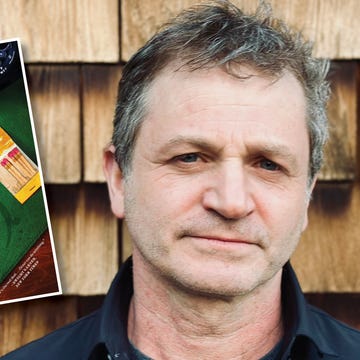Many of us think we know the history of the Oregon Trail from schoolbooks, local lore, or the eponymous video game of the 1990s, but this famed period in the American West contains many stories yet to be told. In Alta Journal’s Issue 29, “Tracing the Storied—and Tragic—Oregon Trail,” author Katie Hickman uncovers a chain of destruction that culminated in the tragic killing of 19th-century missionary Narcissa Whitman, the first white woman to complete the overland journey west. Hickman joins Alta Live to share details of Whitman’s travels along the emigrant’s path to the Pacific—and reveals what the same journey looks like to modern visitors. Don’t miss a chance to virtually travel the most famous 2,200-mile route in western history. We’ll save you a spot on the Zoom wagon.
About the guest:
Katie Hickman is the bestselling author of 10 books. Her most recent work, Brave Hearted, was preceded by She-Merchants, Buccaneers and Gentlewomen: British Women in India 1600–1900 (published in 2019) and by the highly acclaimed series of novels The Aviary Gate, The Pindar Diamond, and The House at Bishopsgate, a trilogy set in early-17th-century Constantinople, Venice, London, and rural Wiltshire.
She is also the author of two bestselling history books, Courtesans and Daughters of Britannia, which between them have sold more than a quarter of a million copies worldwide. Her other works include two travel books, Travels with a Mexican Circus (republished by Bloomsbury in August 2014), which was shortlisted for the Thomas Cook Travel Book Award in 1993, and Dreams of the Peaceful Dragon, the story of a journey on horseback across the forbidden Himalayan kingdom of Bhutan. Her first novel, The Quetzal Summer, was shortlisted for the Sunday Times Young British Writer of the Year Award. Her books have been translated into 20 languages.
Hickman lives on a converted barge on the Thames in London with her partner, the designer Matthew Ruscombe-King.
Here are some notable quotes from today’s event:
- On the difficulty of the journey: “A lot of these folks died, and it was a really, really tough journey. Having done that journey, myself, in a nice, air-conditioned car with a satnav and a trunk full of my own groceries, it was quite tough. It’s quite a tough trip to do today. The folks who did it back in the mid-19th century, I have nothing but admiration for them and for the incredible, sheer kind of perseverance they had.”
- On deaths along the trail: “The whole of that trail was covered in crosses because people were buried by the side of the road. You couldn’t stop. You had to literally bury your loved person, whoever it was: your child, your granny, your mother, or your father. You stopped for a few hours, you dug a shallow grave, and then you moved on. You didn’t have enough food to be able to just hang around on the trail—you had to keep going.”
- On following the trail: “I had to go and see it for myself, and I only really realized when I’d driven through this extraordinary landscape what that must have felt like if you were a family, if you were a woman with a family of young children, maybe a small baby, or you might have just given birth along the trail. You were so vulnerable, and somehow, you had to keep your whole family together and not faint with horror when yet another valley opened out in front of you and you knew that you still had a really, really long way to go.”
- On the Cayuse tribe and measles: “They [the Whitmans] ended up being murdered, butchered by the Cayuse tribe, and this provoked an incredible act of retribution against all Native Indigenous people in the West. It was a profoundly, profoundly terrible thing. It was a terrible thing, obviously, for Narcissa and her husband, but the reason that they were massacred is that almost half of the Cayuse tribe, including almost all of their children, had died from measles the year before.… They died in enormous numbers, and it was devastating for their tribe. They lost, if not all their children, then the majority of their children.”
Check out these links to some of the topics brought up this week.
- Read Hickman’s “Tracing the Storied—and Tragic—Oregon Trail.”
- Check out Hickman’s latest book, Brave Hearted: The Women of the American West.
- Learn more about the Cayuse tribe.
- Explore a map of the historic Oregon Trail by the National Park Service.•











